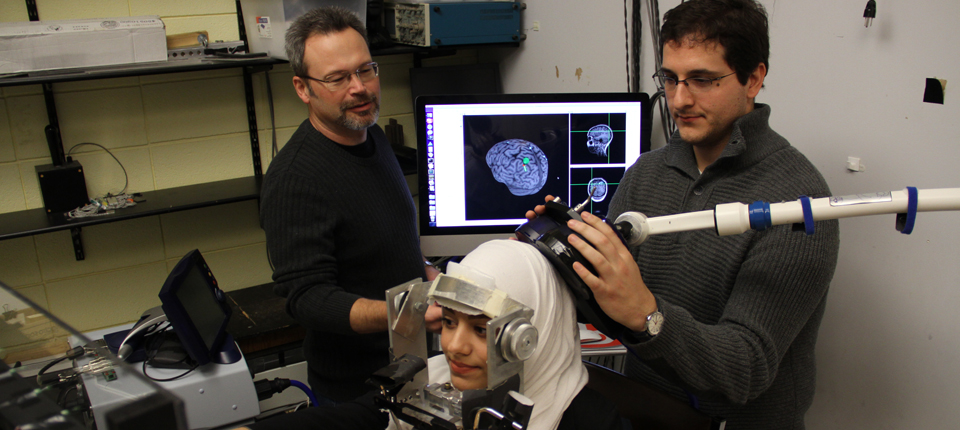How does the brain use vision to plan movement?
Doug Crawford has come a long way since his grade-school psychophysics experiments with tropical fish. His fascination with brain function and behavior brought him to his current research combining the study of vision and movement– control of gaze, hand-eye coordination, and visual memory – in a completely new way. Crawford is a leader in the international neuroscience community, serving as National Coordinator of the neuroscience research consortium Canadian Action and Perception Network, and the Canadian principal investigator behind an international training program between five German and Canadian universities.
Inspiration
I’ve always been interested in what’s going on inside the skull. As an undergraduate, everything that inspired me –the cellular biology of neurons, motor movement systems, behavior, or philosophy– had something to do with the brain. How do neurons represent things in the external world? How do we take in information about the world through our senses and transform this into useful behavior? At some point I looked back and realized I had been doing science projects about the brain since the fourth grade.
Impact
I can’t give you an example of something my students are NOT involved in. At York, I haven’t done a single project that was not led by a trainee. We have to prepare students for a wide variety of career opportunities.
The things that I study are things humans do all day long, from mundane activities like washing the dishes to demanding activities like sports. These basic activities are controlled by much of the brain, and they are affected by most types of neurological disorder. So there are many potential applications for the research. In our International Research Training Group, called The Brain in Action, we’ve created a focus for research projects that can be applied in a wide array of settings. The work is relevant not just clinically, but in areas as diverse as communications, advertising, and national defense.
Highlight
I hope my most significant achievements are still to come, but early in my career, I described how an area in the mid-brain, located between the spinal cord and the cerebral cortex, holds both your eyes and your head in place when you look at something. Damage to this specific area, called the interstitial nucleus of Cajal, causes the eyes and head to start drifting and tilting both vertically and torsionally (around the line of sight). Problems like this are often seen in patients with midbrain damage, so this was an important advance both for understanding the brain and for neurology.
Connections
A colleague from Germany approached me with the notion of creating a joint training program between Canadian and German universities. With funding from the NSERC CREATE program and the DFG in Germany, we have created the Brain In Action International Research Training Group. We have joint weekly seminars and journal-club discussions using an on-line technology called ‘Adobe Connect’ and all students in this program will make a research visit to the other country. The program also has a strong non-academic component, so we’ve partnered with provincial organizations like the Ontario Brain Institute, along with large corporations like Siemens, IBM and Blackberry, to smaller companies involved in eye-tracking, reach, and measuring brain activity. It’s a tremendous opportunity for our students, and is also generating innovative new projects for the faculty members involved as supervisors.
What’s next?
I would really like to integrate the different areas of my research and see how they can be applied in real world situations. We usually study reach, eye movements, and visual memory separately, but what interests me is how the brain puts all those things together. In the real world, we do this constantly, but the combination of all three isn’t studied very often. This is one of the big questions in neuroscience that people are looking at right now: how are different aspects of brain function integrated?


